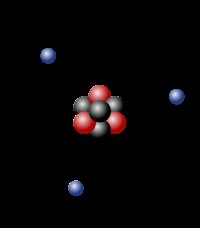Each substance is not something solid, it consists of small particles, which are molecules. Molecules of atoms. From this we can conclude that the determined mass of a substance can characterize the molecules and atoms of the incoming elements. At one time, Lomonosov devoted most of his work to this topic. However, many curious naturalists have always been interested in the question: “In what units is the mass of a molecule expressed, the mass of an atom?”
But, for starters, let's plunge a little into history

In the past, in calculations per unit mass of an atom, a mass of hydrogen (H) was always taken. And, based on this, all the necessary calculations were made. However, most of the compounds are present in nature in the form of oxygen compounds, therefore, the atomic mass of the element was calculated with respect to oxygen (O). Which is rather inconvenient, since it was necessary to constantly take into account the O: H ratio of 16: 1 in the calculations. In addition, studies showed an inaccuracy in the ratio, it was actually equal to 15.88: 1 or 16: 1.008. Such changes served as the reason for recalculating the mass of atoms for many elements. It was decided to leave the mass value 16 for O, and 1.008 for H. Further development of science led to the discovery of the nature of oxygen itself. It turned out that the oxygen molecule has several isotopes with masses 18, 16, 17. For physics, the use of a unit having an average value is not acceptable . Thus, two scales of atomic weights were formed: in chemistry and physics. Only in 1961, scientists came to the conclusion that it is necessary to create a single scale, which is still used today under the name "carbon unit". As a result, the relative atomic mass of an element is the mass of an atom in carbon units.
Calculation Methods
The mass of a molecule of any substance consists of the masses of atoms that form a given molecule. From this it follows that the mass of the molecule must be expressed in carbon units, as well as the mass of the atom, i.e. relative atomic mass is determined taking into account the relative molecular weight. As you know, using the Law of Avogadro, you can determine the number of atoms in a molecule. Knowing the number of atoms and the mass of the molecule, one can calculate the atomic mass. There are several more ways to determine it. In 1858, Cannizzaro proposed a method by which the relative atomic mass is determined for those elements that are capable of forming gaseous compounds. However, metals do not possess this ability. Therefore, to determine their atomic mass, a method was chosen that uses the dependence of the atomic mass and heat capacity of the corresponding substance. But all the considered methods give only approximate values of atomic masses.

As scientific studies have shown, from these approximate values you can determine the exact. To do this, you only need to compare this value with the equivalent. The equivalent of an element is equal to the ratio of the relative atomic mass of the element to its valency in the compound. From this ratio, the correct relative atomic mass of each element was determined.